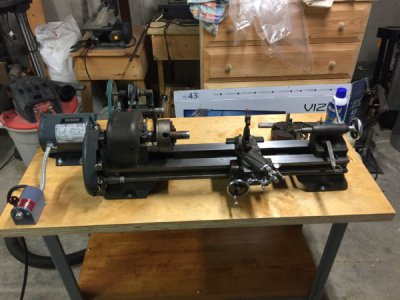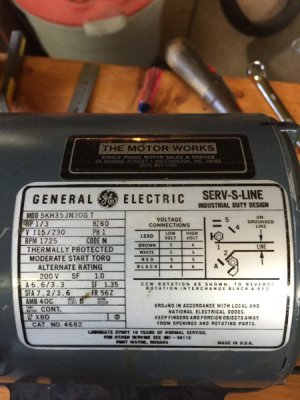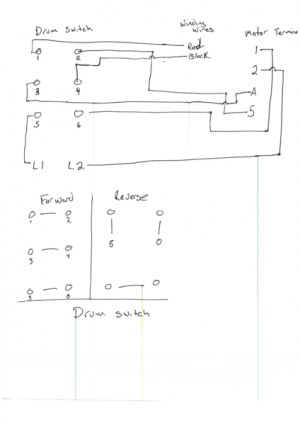- Joined
- Aug 22, 2017
- Messages
- 157
It's together!

I made one small pass on a chunk of steel that seems very hard with a right hand tool that looks pretty much worn out. It cut, not well but it cut.
A few observations. My three jaw chuck has some serious wobble in it. I chucked up a piece of drill rod and the run out was pretty terrible, I didn't even put an indicator on it, it was visually all over the place. The 4 jaw seems to be OK, although I have to admit getting things chucked in it is a challenge that I'm sure I'll get better at with practice.
Is it common for the bull pin to cone pulley to make a little noise when running with out any load? I'm going to guess it is.
My forward tumbler gear is really worn out. I knew this but running them at speed the noise difference between forward and reverse is really noticeable.
I snugged up the bearings and let it run, everything seems pretty tight but still turns freely. I'm pretty happy over all, I just need to get a tool that cuts (I'll try touching up the one I have) so I can play a little. I can see this thing becoming a bit of a money pit, there's so many things I want/need to really use it and some smaller things I still want to fix.
Sorry for the mess, I'm moving stuff around to make room for the lathe.
K

I made one small pass on a chunk of steel that seems very hard with a right hand tool that looks pretty much worn out. It cut, not well but it cut.
A few observations. My three jaw chuck has some serious wobble in it. I chucked up a piece of drill rod and the run out was pretty terrible, I didn't even put an indicator on it, it was visually all over the place. The 4 jaw seems to be OK, although I have to admit getting things chucked in it is a challenge that I'm sure I'll get better at with practice.
Is it common for the bull pin to cone pulley to make a little noise when running with out any load? I'm going to guess it is.
My forward tumbler gear is really worn out. I knew this but running them at speed the noise difference between forward and reverse is really noticeable.
I snugged up the bearings and let it run, everything seems pretty tight but still turns freely. I'm pretty happy over all, I just need to get a tool that cuts (I'll try touching up the one I have) so I can play a little. I can see this thing becoming a bit of a money pit, there's so many things I want/need to really use it and some smaller things I still want to fix.
Sorry for the mess, I'm moving stuff around to make room for the lathe.
K


